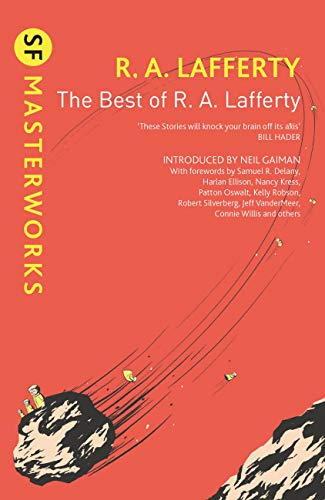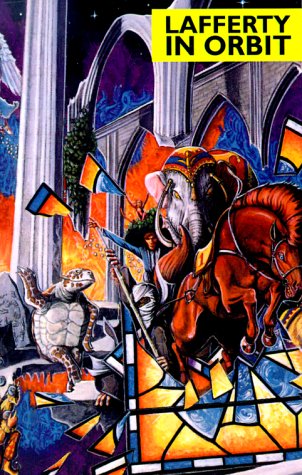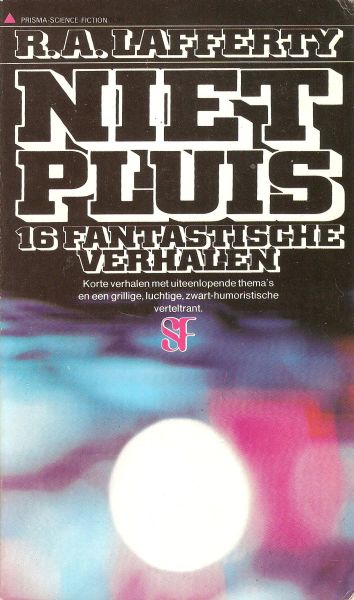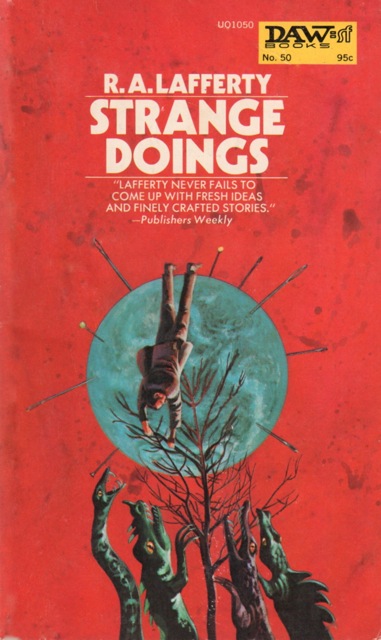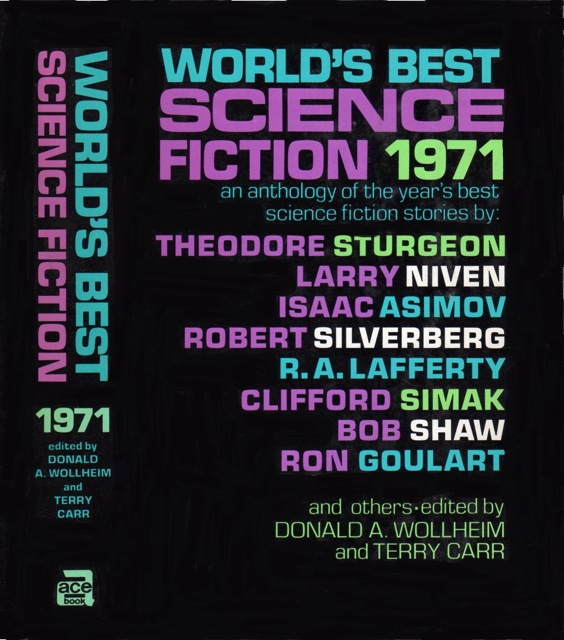Short Stories Continued on Next Rock
Continued on Next Rock
—R. A. Lafferty
-
- · 1970
"The chimney rock is only a little older than mankind, only a little younger than grass. Its formation had been up-thrust and then eroded away again, all but such harder parts as itself and other chimneys and blocks. A party of five persons came to this place where the chimney rock had fallen against a still newer hill. The people of the party did not care about the deep lime stone below: they were not geologists. They did care about the newer hill ( it was man-made ) and they did care a little about the rock chimney; they were archeologists. Here was time heaped up, bulging out in casing and accumulation, and not in line sequence. And here also was striated and banded time, grown tall, and then shattered and broken." —R. A. Lafferty
“Most of Lafferty's fiction employs strange, sometimes startling juxtapositions and images. “Continued on Next Rock” is one of the best examples of this ... Lafferty alternates mystical musings about reincarnation with detailed descriptions of archaeological concepts in a fascinating marriage of magic and science.”
- —Don D'Ammassa, Encyclopedia of Science Fiction (2009)
“... absolutely brilliant. This story contained everything I expect when I hear the term “visionary literature”: it didn't explain itself (yet was accessible), it engaged archetypal figures, and it tripped the reader into a bizarre other world that was similar enough to our usual world that it just might be our own world seen by truly open eyes. I highly recommend this story about an archeological dig gone inexplicably awry, involving a curmudgeonly Magdalen and impossible artifacts.”
- —Deborah J. Brannon, Green Man Review (2004)
“... an unusually concentrated mixture of Lafferty’s perennial themes: native American mythology, the interpretation of strange texts, the Biblical and the Greek, the unattainable woman, the end of the world.”
- —Gregory Feeley (2019)
“... a recurring personal drama of unrequited love and destruction, in which three progressively-more-recent records in stone build to a present-time climax but not, it seems, an end. The two primordial-persons involved have little hope of achieving their mutually-exclusive aspirations except in death, adding to this mythic comedy a near-tragic countertheme which is beautifully supported by the writing ...”
- —Sheryl Smith, Riverside Quarterly Vol. 7 No. 2 (1982)
“How did I write “Continued on Next Rock” then? Upside down and backwards, of course. I started with a simple, but I believe novel, idea that had to do with time. Then I involuted the idea of time (making all things contemporary or at least repeating), and I turned the system of values backwards, trying to make the repulsive things appear poetic (“the nobility of badgers, the serentity of toads”) and trying to set anti-love up as comparable to love (the flattest thing you can imagine has to have at least two sides; it can have many more). I let the characters that had been generated by this action work out their own way then...”
- —R.A. Lafferty, At The Sleepy Sailor (1979)
- · 1972 Ditmar Nominee, · 1971 Hugo Nominee, Best Short Story · 1971 Nebula Nominee, Best Short Story · 1970 Locus 3rd, Best Short Fiction
- · Gregory Feeley (2019) · Joachim Boaz (2014) · Don D'Ammassa (2009) · Mulle Kybernetik (2005) · Deborah J. Brannon (2004) · Neil Gaiman (2002) · R.A. Lafferty (1979)
- · Search
Copyright & Licensing: If you submit a comment, you agree to license the original text of your comment as CC-BY-4.0, allowing others to share and adapt your comment for any purpose, even commercially, as long as attribution is given and changes are indicated. Please see the full license.
Literary criticism of Lafferty has been sparse, and valuable essays remain out of print due to unclear license or estate status. The CC-BY license provides an option for Lafferty scholars to republish and critique your writing, and enables Lafferty archivists to migrate comments to new platforms and media.

